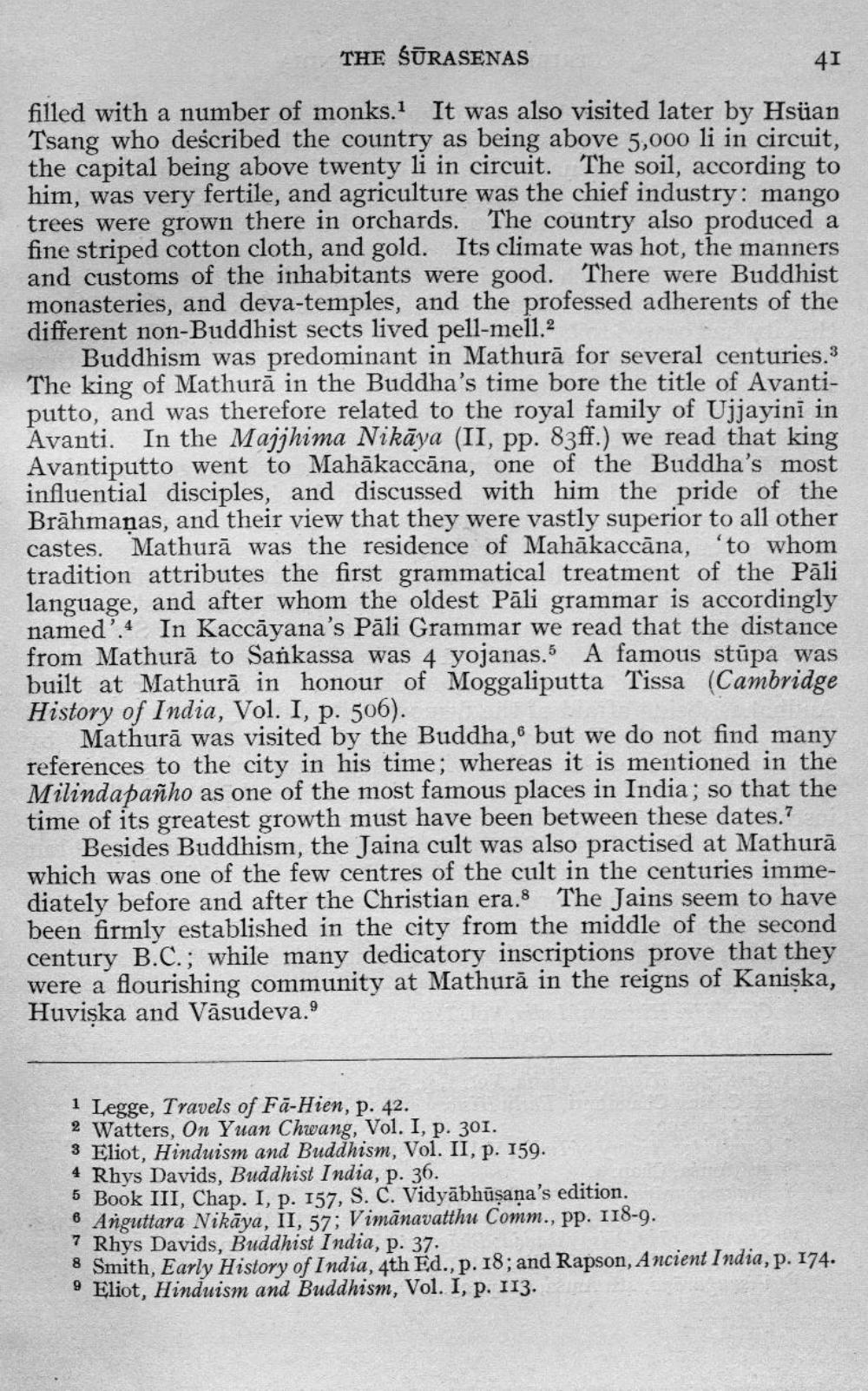________________
THE SURASENAS
filled with a number of monks.1 It was also visited later by Hsüan Tsang who described the country as being above 5,000 li in circuit, the capital being above twenty li in circuit. The soil, according to him, was very fertile, and agriculture was the chief industry: mango trees were grown there in orchards. The country also produced a fine striped cotton cloth, and gold. Its climate was hot, the manners and customs of the inhabitants were good. There were Buddhist monasteries, and deva-temples, and the professed adherents of the different non-Buddhist sects lived pell-mell.2
Buddhism was predominant in Mathura for several centuries.3 The king of Mathura in the Buddha's time bore the title of Avantiputto, and was therefore related to the royal family of Ujjayini in Avanti. In the Majjhima Nikaya (II, pp. 83ff.) we read that king Avantiputto went to Mahākaccana, one of the Buddha's most influential disciples, and discussed with him the pride of the Brāhmaṇas, and their view that they were vastly superior to all other castes. Mathura was the residence of Mahakaccana, 'to whom tradition attributes the first grammatical treatment of the Pali language, and after whom the oldest Pāli grammar is accordingly named'. In Kaccayana's Päli Grammar we read that the distance from Mathura to Sankassa was 4 yojanas. A famous stupa was built at Mathura in honour of Moggaliputta Tissa (Cambridge History of India, Vol. I, p. 506).
Mathura was visited by the Buddha, but we do not find many references to the city in his time; whereas it is mentioned in the Milindapañho as one of the most famous places in India; so that the time of its greatest growth must have been between these dates.7
Besides Buddhism, the Jaina cult was also practised at Mathura which was one of the few centres of the cult in the centuries immediately before and after the Christian era.8 The Jains seem to have been firmly established in the city from the middle of the second century B.C.; while many dedicatory inscriptions prove that they were a flourishing community at Mathura in the reigns of Kaniska, Huviska and Vasudeva.9
1 Legge, Travels of Fa-Hien, p. 42.
2 Watters, On Yuan Chwang, Vol. I, p. 301.
3 Eliot, Hinduism and Buddhism, Vol. II, p. 159.
4 Rhys Davids, Buddhist India, p. 36.
5 Book III, Chap. I, p. 157, S. C. Vidyabhuṣaṇa's edition.
Anguttara Nikaya, II, 57; Vimanavatthu Comm., pp. 118-9.
41
7 Rhys Davids, Buddhist India, p. 37.
8 Smith, Early History of India, 4th Ed., p. 18; and Rapson, Ancient India, p. 174. 9 Eliot, Hinduism and Buddhism, Vol. I, p. 113.




